“There is grandeur in this view of life, with its several powers, having been originally breathed into a few forms or into one; and that, whilst this planet has gone cycling on according to the fixed law of gravity, from so simple a beginning endless forms most beautiful and most wonderful have been, and are being, evolved.” - Charles Darwin, Origin of Species
Don't wanna be here? Send us removal request.
Photo

Charles Robert Darwin (12 February 1809 – 19 April 1882)
Darwin, the famous father of Natural Selection, celebrates his birthday today. He was born into a family of naturalists and abolitionists in Shropshire, England on this day, 205 years ago. From an early age, he explored nature with his brother. Darwin’s caring heart did not allow him to continue on with the medical school career foreseen for him by his father. Such a path was too brutally honest for a mind that could not justify the existence of pain. He instead found himself setting out on the S.M.S Beagle in 1831 towards South America. This voyage would change his life, and the view on all of ours. What he saw in these strange lands, from tortoises… to finches and Fuegians, provided the fodder he needed to help explain the Theory of Natural Selection (Origin of Species, 1859) along with his colleagues Malthus, Lyell and Wallace.
Darwin Correspondance Project: http://www.darwinproject.ac.uk/
13 notes
·
View notes
Photo

"Naked mole rats (Heterocephalus glaber) live in underground cooperative colonies of up to 300 individuals with a dominant breeding “queen” and celibate soldier and worker castes. Biologists have identified only one other vertebrate--the closely related Damaraland mole rat--that uses this rigid reproductive and social structure. Until the late 1970s scientists believed that this trait, known as eusociality, was confined to insects." http://www.damninteresting.com/the-mole-rat-prophecies/
3 notes
·
View notes
Photo

Whiskers are super sensitive to the slightest touch. When they brush against an object, signals are sent to the brain telling the cat what is moving and where. Sumatran tigers have the longest whiskers of all the tiger subspecies. (Photo by Bob Worthington)
538 notes
·
View notes
Photo




The skull of the Chinese Water Deer is one of the most iconic skulls out there.
Like many small Asian deer species, it does not have antlers. Instead the males fight each other with their extremely sharp tusks, slashing at rivals with downward head swings.
When not actively shanking others, the tusks can be folded back slightly., so they don’t interfere with eating.
50K notes
·
View notes
Photo


Banded Jawfish (Opistognathus macrognathus)
Jawfishes are mouthbrooders, which means that they take care of their eggs in the safety of their own mouths. The duty lies with the male and typically lasts for around 8-10 days before the eggs hatch. During this time, he will continually rotate the mass of eggs to ensure that they are evenly aerated with fresh water.
Kevin Bryant via Flickr
1K notes
·
View notes
Photo

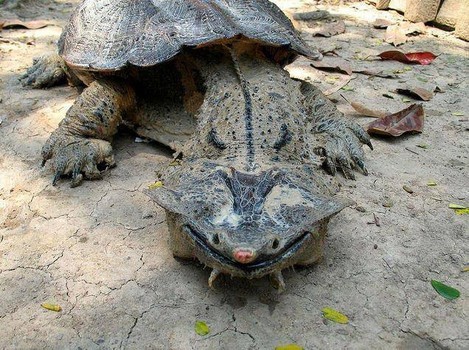
The Mata Mata Turtle
Found mostly in South America. Its shell resembles bark, and its head resembles fallen leaves, making it an expert at camouflage. It is also an expert at looking like my nightmares.
63K notes
·
View notes
Photo
Sometimes the world is more amazing the closer you get to it!

Moth Head - macro photography
source:
996 notes
·
View notes
Photo

Photograph of Earth taken by Voyager 1 Dubbed: "Pale Blue Dot"
Seen from 3.7 billion miles away.
"From this distant vantage point,the Earth might not seem of any particular interest. But for us, it’s different. Look again at that dot. That’s here, that’s home, that’s us. On it everyone you love, everyone you know, everyone you ever heard of, every human being who ever was, lived out their lives. The aggregate of our joy and suffering, thousands of confident religions, ideologies and economic doctrines, every hunter and forager, every hero and coward, every creator and destroyer of civilization, every king and peasant, every young couple in love, every mother and father, hopeful child, inventor and explorer, every teacher of morals, every corrupt politician, every “superstar,” every “supreme leader,” every saint and sinner in the history of our species lived there – on a mote of dust suspended in a sunbeam.” —Carl Sagan, Pale Blue Dot
5K notes
·
View notes
Photo
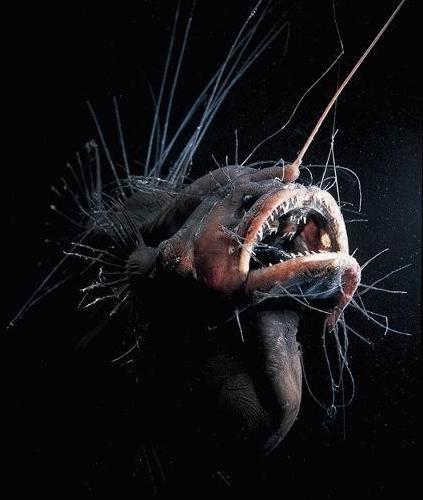
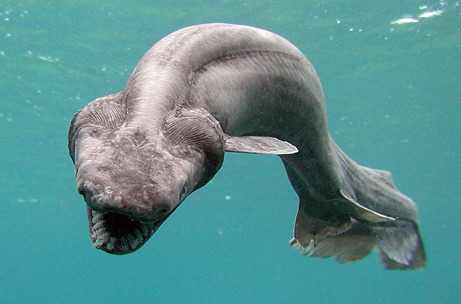


Mariana Trench - Deepest part of the world’s ocean
Some of the life found in Mariana Trench
1)Fanfin Seadevil From the Angler-Fish family. It fuses with the female during mating and uses her blood-stream. 2)Frilled Shark Often linked to the mythical sea-serpent, this 300 trident-shaped teeth monster, can grow upto six feet. It also takes like 3 1/2 years to give birth(gestation).
3)Fangtooth Largest teeth of any fish in the ocean but don’t worry, it’s like six inches long. 4)Barbeled Dragon Fish It’s also about six inches long. It can produce its own light and the walls of its stomach are pitch black so no light can be seen through it.
4K notes
·
View notes
Photo
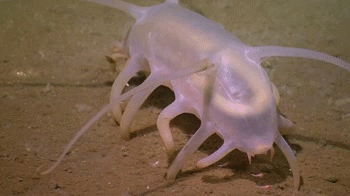

This surreal animals is Scotoplane globosa or “sea pig”. here, accompanied by a (probably) group of tanaid crustaceans.
Scotoplanes live on deep ocean bottoms, specifically on the abyssal plain in the Atlantic, Pacific and Indian Ocean, typically at depths of over 1000 meters. Scotoplanes are deposit feeders and obtain food by extracting organic particles from deep-sea mud
Sea pigs are a type of sea cucumber, belonging to the holothurian class of the Echinodermata phylum. Echinoderms include such other animals as starfish, brittle stars, sea urchins and feather stars.
video: Neptune Canada·
728 notes
·
View notes
Photo

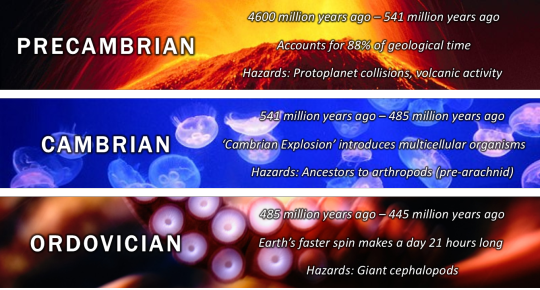
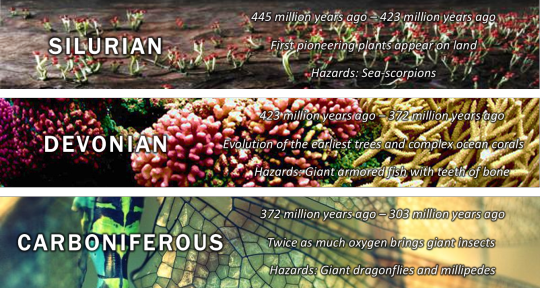
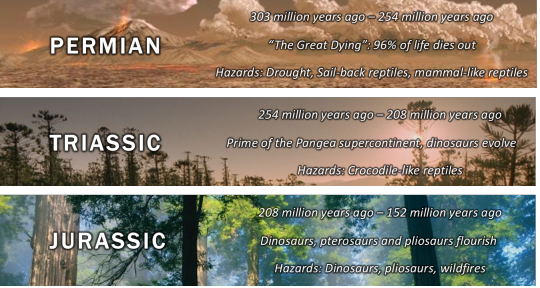
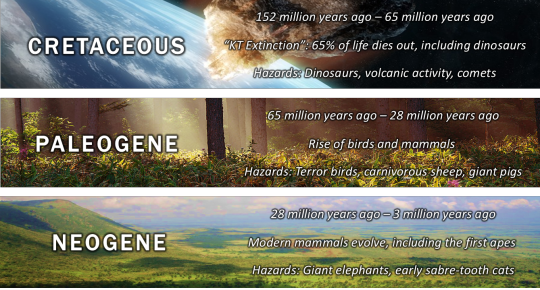

45K notes
·
View notes
Photo

Mistaken Identity: ‘Sea Anemone’ Is Actually New Type of Animal
by Elizabeth Howell
Lurking in the deep sea is a marine creature thought to be one of the world’s largest sea anemones. But the animal, which has tentacles measuring more than 6 feet (2 meters) long, isn’t an anemone but rather the first known organism in a new order of animals, according to new research.
In the four-year study, researchers created a “tree of life” for sea anemones, which are sometimes called “flowers of the sea” but are actually stationary meat-eating animals. In doing so, they examined the DNA of Boloceroides daphneae — discovered in 2006 in the deep Pacific Ocean — and found the creature stood out as not fitting on the sea anemone tree of life at all.
Researchers have now renamed the species Relicanthus daphneae, placing it into a new order (the equivalent of Carnivoria for mammals, Crocodilia for reptiles or Actiniaria for sea anemones) within the subclass Hexacorallia, which also includes anemones, black corals and stony corals…
(read more: Live Science)
photograph: Credit: ©NERC CHESSO project
803 notes
·
View notes
Quote
Nature is busy creating absolutely unique individuals, whereas culture has invented a single mold to which all must conform. It is grotesque.
Jiddu Krishnamurti (via explosionsoflife)
30K notes
·
View notes
Quote
In the beginning there was nothing, which exploded.
Terry Pratchett, Lords and Ladies (via currentsinbiology)
294 notes
·
View notes
Photo

Galapagos Giant Tortoise (Cryptodira: Testudinidae: Chelonoidis nigra) This poised mountain of a reptile is the world's largest living species or tortoise. The giants can weight up to one thousand pounds and live up to two hundred years! They were an iconic muse for a young Charles Darwin, who saw them as a prime example of adaptive radiation. Spreading out from a supposed common point... different islands now have tortoises with different carapace (dorsal shell) shapes! Domed carapaces persist on larger, wetter islands, while saddlebacked carapaces are found on the others. Although once so populous that spanish explorers saw fit to label the archipelago of their island home's with the name "Galapagos" (spanish for tortoise), the subspecies that live on the separate islands are under constant threat from introduced feral dogs and cats. The Galapagos National Park and the Charles Darwin Foundation are doing their part to reintroduce members into the wild are preserve those who remain. You can do your part, too, by at least respecting these wonderful and wise animals. Imagine a human living to be two hundred years old! Oh, what they would see and know!
#galapagos#giant tortoise#animal#turtle#tortoise#lonesome george#charles darwin#evolution#ecology#biology#zoology#conservation#science#biodiversity#physiology#endless animals#Chelonoidis nigra
1 note
·
View note
Photo
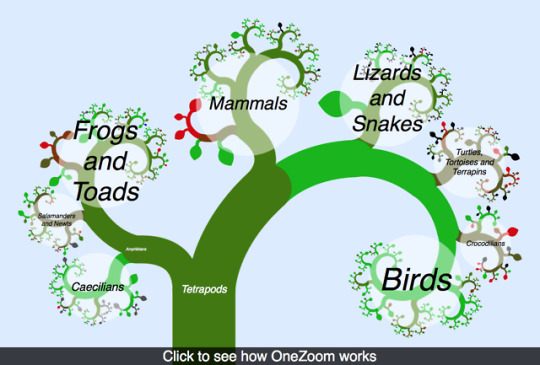
OneZoom Tree of Life Explorer
OneZoom is committed to heightening awareness about the diversity of life on earth and its evolutionary history. Here you can explore the tree of life in a new way: it’s like a map, everything is on one page, all you have to do is use your mouse wheel to zoom in and out. Explore
846 notes
·
View notes
Quote
All science is intelligent inference; excessive literalism is a delusion, not a humble bowing to evidence.
Stephen Jay Gould (Dinosaur in a Haystack) While discussing how gaps in the fossil record should not be taken literally, as not all dinosaurs become fossils.
1 note
·
View note